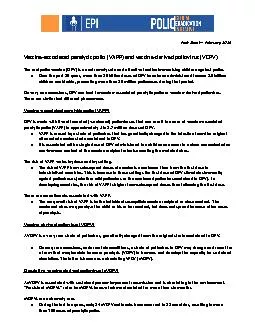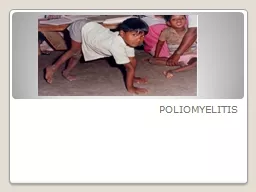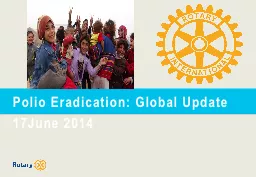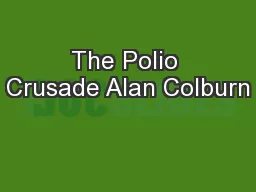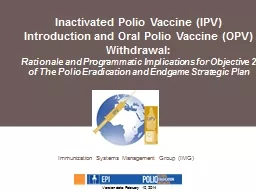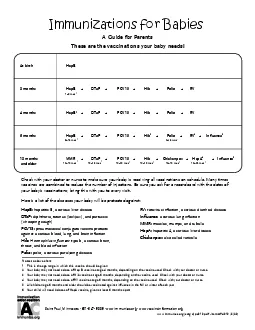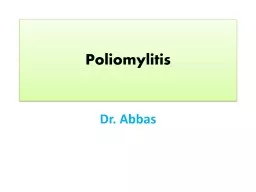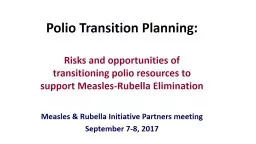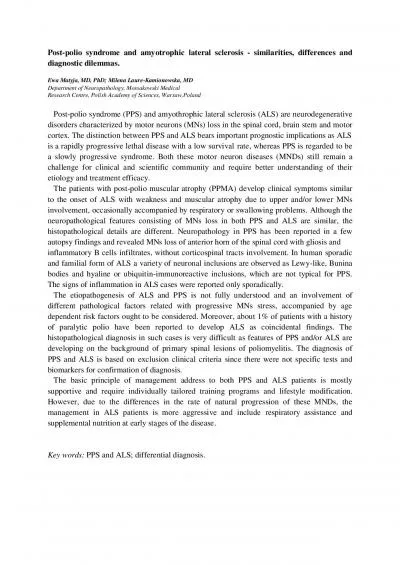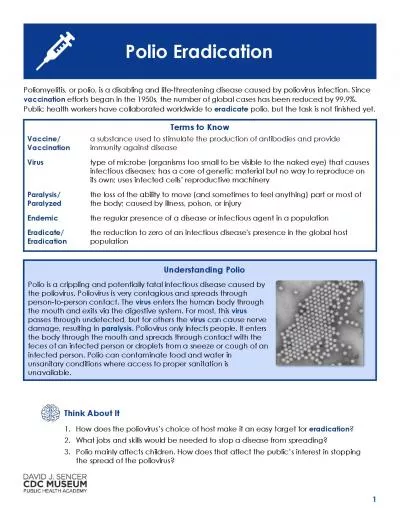PDF-associated paralytic polio (VAPP) and
Author : giovanna-bartolotta | Published Date : 2017-03-02
Fact Sheet x2013 February 2015 Vaccine vaccine derived poliovirus VDPV The oral polio vaccine OPV is an extremely safe and effective tool for immunizing children
Presentation Embed Code
Download Presentation
Download Presentation The PPT/PDF document "associated paralytic polio (VAPP) and" is the property of its rightful owner. Permission is granted to download and print the materials on this website for personal, non-commercial use only, and to display it on your personal computer provided you do not modify the materials and that you retain all copyright notices contained in the materials. By downloading content from our website, you accept the terms of this agreement.
associated paralytic polio (VAPP) and: Transcript
Download Rules Of Document
"associated paralytic polio (VAPP) and"The content belongs to its owner. You may download and print it for personal use, without modification, and keep all copyright notices. By downloading, you agree to these terms.
Related Documents

